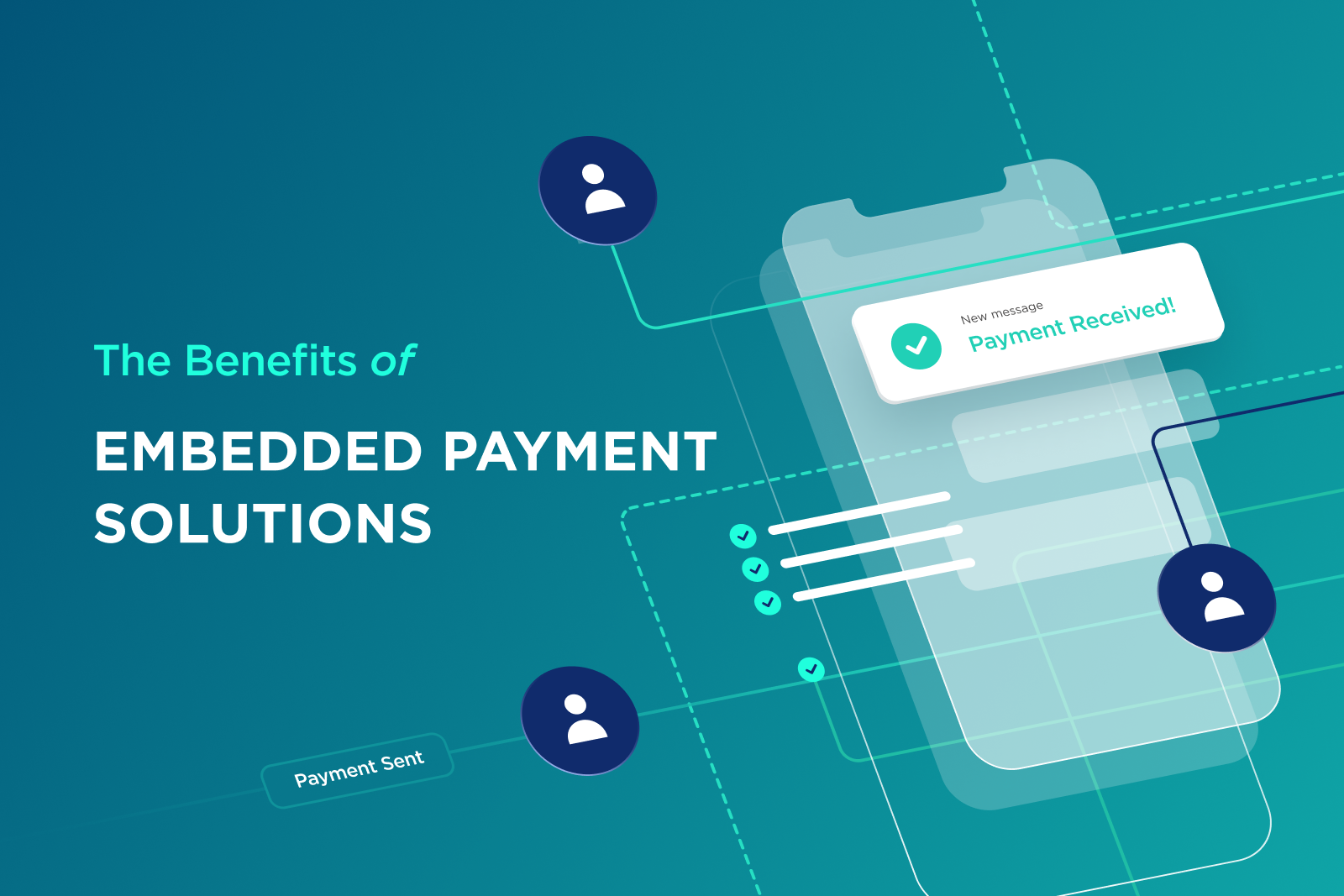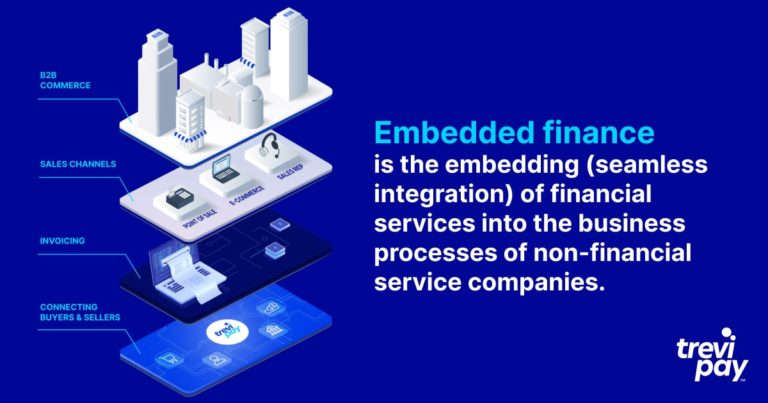The SaaS market has grown quite rapidly in the recent past. While it was $412 billion in 2021, it stood at $591 billion in 2023, increasing by more than 140%. However, the industry now faces a critical point. After years of unrestricted growth, the SaaS companies are shifting away from the “growth at all costs” mantra to “responsible growth.” The industry is seeking to build resiliency in the face of changes and disruptions. The ability of providing embedded payments in a manner that does not take attention from core

SaaS offering but supports in creating greater value addition in front of their customers enables great scope of enhancement of customers’ experiences to enhance loyalty and profitability of business operations. This variety can make it hard to decide which payment provider is suitable for your needs and how you can integrate payments into your current SaaS product. We spoke to payment experts at Forrester and Stax to help guide you through these shifting times and successfully navigate embedded payments. Watch the discussion below or see some of its highlights in this article.
The Current SaaS Environment
There are high hopes for embedded payments since the market is projected to increase to $230 billion in the next two years. The demand for embedded payments is quite massive. Finextra conducted a survey across 1000 businesses in five countries, and results indicated that 83% of the SMBs desire to integrate payment services in their software applications. On the other hand, only 9% had embedded payments integrated in their current software stack.
Disruptions and Resilience
At present, the SaaS industry is optimistic but cautious. Businesses are also realizing that they need to be adaptable and agile to respond to changes quickly. Lily Varon, Principal Analyst at Forrester says, “The focus is on being able to be resilient, creative, and adaptive in an environment that necessitates it.” Despite having an optimistic outlook, businesses also have a heightened awareness that disruptions are just around the corner—whether socio-political, global, or others. With multiple global crises occurring back-to-back, SaaS providers are quickly realizing resilience is essential for business growth in the long run.
Shift to responsible growth
Apart from building resilience, SaaS companies are slowly making a shift towards more responsible, sustainable, and efficient growth. They go slower, mature their business strategies, and focus on debt overhangs. Here’s what Lily has to say about this trend. “We’ve seen trimming of headcount. We’ve seen the reduction of debt overhangs. We’ve seen share buybacks and things like that. So you may hear talks of how to build resiliency, how to boost profitably, and how to do it sustainably and smartly in earnings calls and other conversations.”
Value-Added Services
According to Lily, one of the best methods for SaaS businesses to be able to maintain growth, maximize profitability, and drive innovation is through providing value-added services. Whether that is to build product stickiness with buyers bring customers back to your product repeatedly or even provide more profitable services to be price competitive, adding payment services into the SaaS platform offering makes for a great strategy. Although embedded payments can be much more complicated to implement, as the numbers mentioned above indicate, it is a highly sought-after service that can become very profitable for SaaS businesses.
What Are Embedded Payments?
According to Fred Nelson, VP of Sales Enablement at Stax, “Embedded payments is just integrating the payment component directly into your solution. There are a number of ways to do so.” The payment system can be semi-integrated or a hosted solution. But having a fully integrated, seamless embedded payment solution, something like what Stax offers, really allows the SaaS provider to focus on their core solution.”

This, in turn, can improve customer satisfaction and retention rates. As Fred points out, with an embedded payment system, end users don’t have to go out and access different third-party solutions or open up various third-party URLs to complete payments. Rather, the user makes the payment directly from the software itself while Stax handles everything securely at the back end from the payment component. The SaaS provider does not need to support those integrations, potentially troubleshoot them, or have to manage downstream, the ever-evolving pieces for those integrations which otherwise can be very time-consuming and costly. Revenue generation is one of the most significant benefits that can be obtained from offering embedded payments to your customers. Tiered pricing models and revenue-sharing strategies help SaaS companies earn a lot with embedded payment services from Stax.
How to Succeed in SaaS with Embedded Payments?
To be successful in the SaaS industry with embedded payments, you should keep certain things in mind.
- Make sure that the installation process of your customer goes off without a hitch. Consider all the end-to-end process a customer may undergo to set up an embedded payment. Train support staff in a way that should continue to maintain customers’ support post full installation of an embedded payment. Provide tailor-made support services for individual customers.
- Younger customers such as millennials and Gen Z tend to appreciate good customer support. They are also looking for innovative solutions and what they buy is entirely different from what their older counterparts do. They have been growing in a digital era and are accustomed to everything being available in minutes. So, ensure that your system of payments embedded offers the same experience.
- Offer ways customers can accept payments, but the reporting, dashboards, analytics, and the rest of monitoring features can also be very beneficial to the customer. It is possible to think about harnessed and usable information from all easily available financial data for the business of the customer.
- Ensure that your software stack is modernized and updated. A hodge-podge of old and new technologies can make the entire system vulnerable and inefficient. This also makes integration much harder and you’ll be spending a lot of time, money, and effort troubleshooting for your customers.
- Balance innovation with integration. You must continue to innovate by having embedded payments so you may stay in phase with the changing payments industry. But don’t let constant updates with new features shatter the currently working integrations of embedded payment with your SaaS platform.
- That is why you need to select the right payment partner to take care of all the above for you. Stax has its embedded payment solutions that are easy to integrate, security-compliant, intuitive, and quick to set up. As Fred says, “We could have customers approved the same day and processing within 24 hours.
Long-term Benefits of Embedded Payments Integration
Integrating embedded payments to your SaaS platform offers the following benefits:
- Offer the latest payment technologies. When SaaS companies start offering embedded payments, they provide all the technologies and solutions downstream customers look for. Customers don’t have to look at alternative solutions or other providers in order to meet their business needs.
- Established support structure. You know that your business is strategically in line with an embedded payment provider. The appropriate partner will always listen, respond and ensure the technologies are aligned to achieve the best situation for you with your customers for always meeting wherever they are in payment journey and requirements.
- Reliability for you and your customers. With the proper payment partner, your payment process should just work like a well-oiled machine. You would have resources when you need support.
- Improved revenue. The right embedded payment solution provider can really lead to an amicable relationship in the long run. That is to say, improved customer satisfaction leads to the retention of said customers and a boost in the revenue.

Final Thoughts
Choosing the right payment provider to partner with when you offer embedded payments can be overwhelming. Thankfully, our experts have tons of insightful information and tips to offer. Identify solutions providers that provide great customer support, modern solutions, and full transparency into prices and their products.
FAQs
What are embedded payments?
Direct payment processing integration into SaaS applications, making transactions in-app without the use of third-party tools.
Why do embedded payments matter?
They offer better user experience, improved customer retention, increased revenue, and better reporting and analytics.
What are the advantages of embedded payments?
- Seamless payment experience
- Customer loyalty increase
- Revenue generation via tiered pricing and sharing fees
- Improved efficiency and insights
What challenges do SaaS companies face?
Integration complexities, onboarding issues, balancing innovation, and ensuring compliance and security.
What do SaaS companies need in a payment partner?
Easy integration, modern technology, transparent pricing, great support, and scalable.
How quickly can businesses implement embedded payments?
With the right partner, setup and processing can start within 24 hours.
What role does customer support play in embedded payments integration?
Effective customer support ensures smooth onboarding, helps resolve issues quickly, and enhances customer satisfaction, contributing to long-term retention.
How do embedded payments contribute to business growth?
They improve customer experiences, increase operational efficiency, and provide additional revenue streams, enabling sustainable and responsible growth.
What are the long-term benefits of integrating embedded payments into SaaS platforms?
- Access to the latest payment technologies
- Reliable payment processes and support structures
- Enhanced customer loyalty and retention
- Sustainable revenue growth over time
